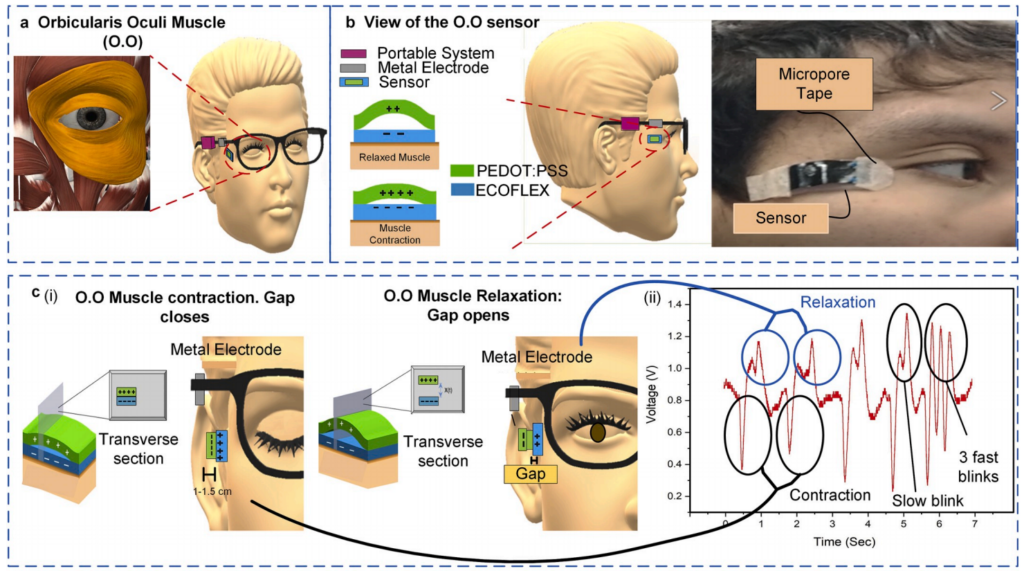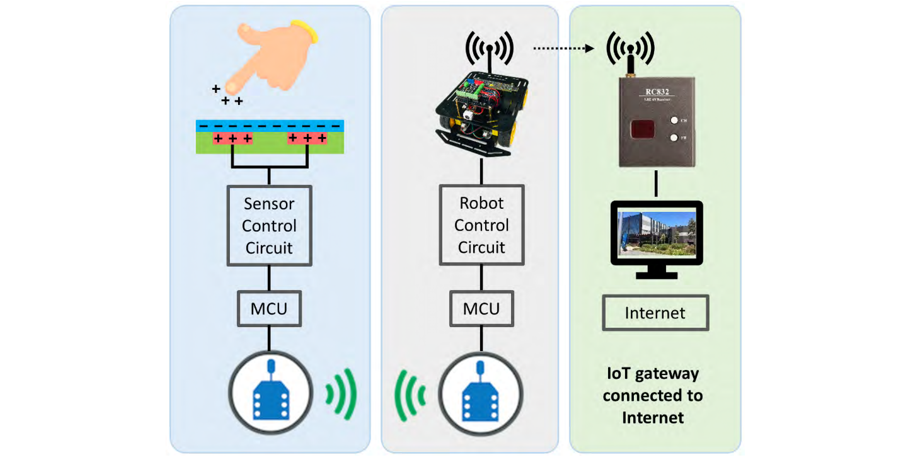Recent Research
Cuffless blood pressure monitoring

A chest-based continuous cuffless blood pressure method: Estimation and evaluation using multiple body sensors (Information Fusion 2020)
In this research, cuffless BP calculation based on five different PAT readings using Bio-impedance (BImp) at the shoulder as an alternative to PPG, has been investigated. Sensor placement is on the patient’s chest; which hides them beneath the patient’s clothes making them more suitable for ambulatory monitoring systems. Technology performance was assessed using different postures, exercises and Glyceryl Trinitrate (GTN) spray doses; which provided stable, rising and falling BPs for evaluation. Data were collected from 41 participants who were sitting, standing and supine. Twenty-four of 41 participants undertook experiments including a handgrip task (isometric exercise), three periods of cycling on an exercise bike with light, moderate and heavy resistance settings and an observed rest period at the end. The remaining 17 of 41 subjects received GTN spray for predefined times with variable recovery periods afterwards. Different methods of PAT extraction from BImp data were compared for accuracy. Comparisons were made between PAT readings alone and PAT combined with Heart Rate and the combination model performed better when calculating BP. Simultaneously, data were collected using PPG-based PATs compared to BImp-based PATs. BImp-based PATs proved 3% more accurate than PPG-based PATs, demonstrating the potential superiority of BImp-based BP calculations.

Clinical study of a chest‐based cuffless blood pressure monitoring system (Medical Devices & Sensors 2020)
This work presents a clinical study of chest‐based blood pressure (BP) monitoring technique. This research was designed to examine pulse transit time (PTT) and to measure beat‐to‐beat and cuff‐based systolic BP (SBP) and diastolic BP (DBP). The PTT values were extracted as the time difference between the end of the pre‐ejection period (PEP) measured using an on‐body continuous‐wave radar (CWR) sensor and the pulse arrival time (PAT) in central arteries extracted from the shoulders’ bio‐impedance (BImp) signal. The system was investigated under three experimental conditions: (a) resting at various postures; (b) rising exercise stress, followed by resting; and (c) spraying inconstant doses of glyceryl trinitrate (GTN) medicine and recovery. Data were collected from 43 volunteers who participated in posture recordings, 26 undertook exercises and 17 experienced GTN spray. The BImp‐based PTT was compared with PPG‐based one (peripheral) in terms of BP estimation. Various mathematical methods of calculating BPs from PTTs were investigated to gain the most accurate outcomes. We demonstrate the accuracy of each model in this work. Our study found that cuffless BP determined from PTT derived from central arteries shows more than 3% accuracy compared to that determined from peripheral arteries.
Triboelectric nanogenerator-based sensors

Self-powered eye motion sensor based on triboelectric interaction and near-field electrostatic induction for wearable assistive technologies (Nano Energy 2020)
Triboelectric nanogenerators show great potential as flexible motion transducers for wearable human-machine interfaces (HMI). The present research explores a new configuration named Non-Attached Electrode-Dielectric Triboelectric Sensor (NEDTS) and its application in specialized HMI to support people with disabilities in daily life. In this topology, the conductive electrodes are not bonded to the dielectric materials by any coating or sputtering process. Instead, due to the triboelectric interaction between the two elements in motion, voltage is generated in a separate conductor by non-contact electrostatic induction. This allows a near field remote sensing using triboelectric/electrostatic coupling. By applying the mentioned sensing technique, an Orbicularis Oculi muscle motion sensor has been developed to monitor voluntary and involuntary eye blinks. The new transducer is integrated into a portable HMI for hands-free computer cursor control to assist people with mobility impairment. The conceived device was also tested in other applications as hands-free remote car and drone control, and for monitoring driving behaviour. Additionally, a PDMS-based eyelid motion sensor has been tested to feature other virtues of the NEDTS when sensing unconventional motion dynamics

Self-powered control interface based on Gray code with hybrid triboelectric and photovoltaics energy harvesting for IoT smart home and access control applications (Nano Energy 2020)
The rapid expansion of Internet of Things (IoT) in many living environments, such as smart home, has motivated the development of human-machine interfaces (HMIs) for the interactions between human and machine. In this paper, a sliding operation triboelectric nanogenerator (TENG) based control disk interface, generating 3-bit binary-reflected Gray-code (BRGC), is developed by integrating copper electrodes, polytetrafluoroethylene (PTFE) film, photovoltaic cell, and electronic signal processing circuits. Eight sensing transitions are successfully achieved by the 3-bit BRGC encoding patterns with two electrodes. One electrode represents the binary bit “0”; another electrode represents the binary bit “1”. A third electrode located in the middle of the disk is utilized to indicate the sliding directions (inward or outward). The output signal detection mechanism and signal processing circuit have been developed, and a Bluetooth transmitter is employed for enabling controlling applications wirelessly. Besides the self-powered sensing characteristic of the triboelectric control disk, a hybrid energy harvester that can harvest triboelectric and photovoltaics energy is proposed to power the entire electronic control circuit. Finally, this triboelectric control disk is employed as a self-powered interface for smart home control and password authentication access control system, which exhibits promising reliability, practicality, and flexibility.
IoT for healthcare monitoring


Edge-Based Hybrid System Implementation for Long-Range Safety and Healthcare IoT Applications (IEEE Internet of Things Journal 2021)
In this research, an edge-based hybrid network system architecture is presented. The proposed system consists of hybrid routers and an IoT gateway. The router supports two wireless protocols, BLE and Long Range (LoRa), and is equipped with a solar energy harvester to extend the router’s lifetime. It can extend the coverage of short-range BLE network by utilizing LoRa wireless technology, and support fundamental edge computing tasks such as preliminary data processing. The IoT gateway can support multiple IoT protocols, including LoRa, BLE, and XBee. It can perform more advanced edge computing tasks, such as data filtering, storage, processing, user interface, and cloud connection. Three case studies incorporating a wearable safety monitoring sensor network, a healthcare monitoring application, and a smart hospital application are studied with the proposed edge network system to demonstrate its promising capabilities to support IoT applications. Experimental evaluations indicate that, by processing data at the edge, the minimal delay is only 11.5 ms. Furthermore, with the hybrid LoRa network implementation, the BLE network can be extended to 2.4 km.

Autonomous Hand Hygiene Tracking Sensor System for Prevention of Hospital Associated Infections (IEEE Sensors Journal 2020)
Hospital associated infection (HAI) can lead to serious medical issues in healthcare systems, which is a major concern in the recent era. Hand hygiene is considered as an effective measure to prevent cross infections in hospital environments. Research efforts in the field of Internet of Things (IoT) can provide reliable edge-based solutions in hospitals to prevent HAI by adopting sensing, networking, and computing technologies. In this paper, we present a prototype for autonomous hand hygiene tracking combining different IoT technologies, which can be applied in healthcare environments to monitor hand hygiene activities and better prevent HAIs. The system can record hand-washing activities and provide prompt feedback if the hand-washing is not performed as required using wearable devices and smart dispensers. Collected data are transferred to a gateway via Bluetooth Low Energy (BLE) and Long Range (LoRa) wireless technologies for long-range network coverage. The hand-washing data are processed at the edge of the network (i.e., router and gateway) to provide low-latency feedback. The data can also be forwarded to a cloud server for storage, analysis, and visualization. The proposed hand hygiene tracking prototype has been tested and evaluated under different scenarios in a mock ward, demonstrating its applicability in hospital environments.

A Rigid-Flex Wearable Health Monitoring Sensor Patch for IoT-Connected Healthcare Applications (IEEE Internet of Things 2020)
In this research, the design of a compact wearable sensor patch is presented for measurements of different physiological signals, such as the electrocardiogram (ECG), photoplethysmography (PPG), and body temperature. As ECG and PPG sensors are integrated with the same device, the proposed sensor patch can be used to estimate blood pressure (BP) continuously based on the pulse arrival time (PAT) without extra wires and devices. The sensor patch consists of a center board for signal acquisition and processing, a power board for energy supply and charging batteries, and three sensors for vital signs monitoring. All the components are designed in a rigid-flex structure, which can be easily attached to the human body for remote health monitoring applications. The sensors can be detached from the center board for customized measurements of a certain physiological signal (e.g., ECG) to reduce power consumption. Experiments are conducted to validate the performance of the proposed sensor patch by comparison with a commercial reference device. With the integration of a miniaturized Bluetooth low-energy (BLE) module, the proposed sensor system can transmit physiological measurements wirelessly to a gateway. Data encryption is applied on both the sensor patch and gateways to protect data for privacy and security purposes during transmission. Both a mobile gateway (based on smartphones) and a fixed gateway (based on portable computers) are designed as the bridge between the wearable sensor system and the Internet cloud, where health data can be stored and further analyzed. The experimental results demonstrate the feasibility of the overall platform for IoT-connected healthcare applications.
Wireless capsule

A Navigation and Pressure Monitoring System Toward Autonomous Wireless Capsule Endoscopy (IEEE Sensors Journal 2020)
Continuous navigation information for medical insertion methods including wireless capsule endoscopy is an important feature to guide a medical instrument/object to the targeted location within a hollow organ or internal cavity of the patient in the best possible way. Also, an autonomous medical insertion or swallowable device with a self-contained navigation system would reduce the role of the high-level operator and hence reduce the human-factor mistake and risk of injury. The navigation techniques suggested for Wireless Capsule Endoscopy are image-based that are required to transfer and process a significant amount of data in real-time operation. This would increase the complexity of the system and would be more difficult in dark or liquid environments. A novel navigation system for Wireless Capsule Endoscopy/ordinary endoscopy that does not depend on any external source for operation and can handle the uncertainties of the path even in a dark or liquid environment (i.e.mucosa) of the human body is presented in this paper. The key element of the system is based on a capacitive-based pressure sensor array mounted on the capsule with the shape of semi-hemisphere. The place of each node is arranged to represent the variation in the latitude and the longitude of the travelling path. The system can acquire the required information to navigate the capsule in three-dimensional space and enhance the safety of the locomotion by monitoring the pressure between the capsule and the ambient environment. The system determines the variation of the path 180° in longitude and latitude with less than (< 0.004%) percentage of error. Working algorithms for flexible and rigid environments are described in this paper.